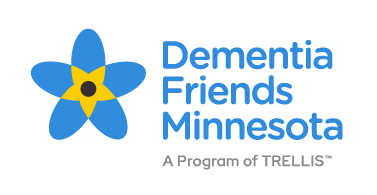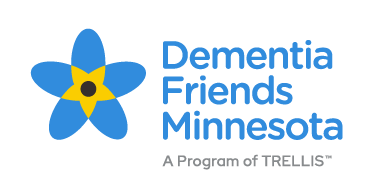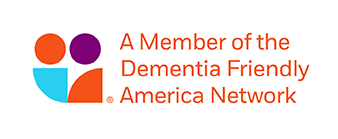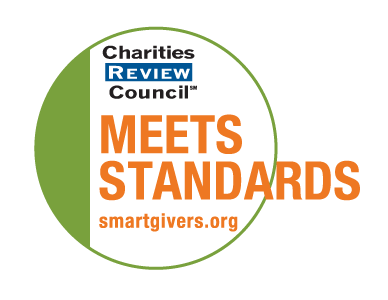Dementia Friends Interview: Mary Lenard and Olivia Mastry
To celebrate the tenth anniversary of Dementia Friends Minnesota, every month in 2024 we will be featuring a Friend who has taken the work to new heights. To kick things off, we spoke to two women who were there at the beginning: Mary Lenard, Co-Founder of Giving Voice Chorus and former Executive Director of Alzheimer's Association, Minnesota-North Dakota Chapter, and Olivia Mastry, Founder and Principal of Collective Action Lab.
Can you walk us through where ACT on Alzheimer’s and Dementia Friends MN began and how you were involved?
Olivia: There had been some really great work done led by Mary and the Alzheimer's Association to pass legislation which mandated an Alzheimer's disease governor-appointed working group. Collective Action Lab was asked to facilitate its meetings as it began to formulate recommendations for the state about how best to prepare for Alzheimer's disease and related dementias.
Mary: The statewide plan was a call to action for the state of Minnesota. A planning group met for 18 months and put together a report to the legislature that we delivered in 2011. It basically said, here's what Minnesota needs to do to become a dementia friendly state. The plan itself broke down into continued work that was mostly volunteers coming together and making this plan an actionable 5-year statewide initiative.
Olivia: We knew that if there wasn't further action, the recommendations would really sit on a page as opposed to coming to life. And so, the group really decided to keep going, even outside of a formal or governmental driving structure and become its own collaboration or coalition and keep driving forward. And that meant doing everything from bootstrapping the funding to organizing. What would the structure look like? How would it be governed? What would, what would it look like going forward? And we just took it on the road and kept going. It refused to die.
Can you tell us what the energy was like in with the launch of the first ACT on Alzheimer’s communities?
Olivia: We all sort of always had our fingers in a socket, there was so much pent-up energy that people had held for so long out of frustration for seeing the needs that weren’t met. Then giving ourselves permission to just go after the issues and create what needed to be created and implement and do it together. Who are we waiting for? If not us, then who? It was really inspiring.
Mary: There were already people doing different things across the state and this pulled everyone together and got us all rolling in the same direction. There was the sense we could do so much more together for those with dementia and caregivers across the state if we all kind of came to the table. There was a strong feeling that we were doing something groundbreaking. It was the most collaborative thing I've ever experienced. The way each group showed up and brought something to this dementia work was incredible. It felt like all the engines were firing and helping us move the needle for people with dementia.
How did Dementia Friends Minnesota emerge as a tool for this work?
Mary: I was looking around, I kept seeing the work that other countries were doing and in the UK they were ahead of us in training like people who worked in cafes, people that worked in grocery stores or banks. They were the first country to put a little sign in a shop window that said we serve people with dementia here. It was like, well, this is what we're searching for. It didn't take much to say this this would be an easy way for us to do outreach and to make a difference. Olivia was the one who brought that all to life. Honestly, her skills of taking an idea and then putting it into an action plan is marvelous.
Olivia: We reached out to Dementia Friends UK and rather than recreating the wheel, we were able to implement it in partnership, making sure that we kept the integrity of the original program as we moved forward. People got very excited about it because Dementia Friends, alongside the Dementia Friendly Community, gave people options. Some people didn't feel they were in a position to undertake the full Dementia Friendly Community work. But Dementia Friends is so accessible.
Both of you took this initial work in such interesting directions. Olivia, how did you assist in taking this work to a national level?
Olivia: ACT on Alzheimer's was getting a lot of attention nationally and at that time there was a national working group on Alzheimer's disease operating in DC who wanted to learn about what we were doing in Minnesota, [specifically the] Dementia Friendly Community work. Everybody looked at it and said, you could do that anywhere, let's replicate that. Trellis was a great partner in that they made everything available at a national level and then any state could skip all the hard work that Minnesota did and just take it and run with it at a community-by-community level. In about a two-year process we were able to develop all the tools and resources at a national level and implement them at a community level. Now there are 43 states involved and a lot of that growth happened in the first few years. I've never experienced something spread that quickly and that successfully, which had a lot to do with how we built the materials here, Minnesota's generosity in sharing, and then the national interest and willingness to work hard to make it happen.
Mary, you took this work in another direction. Can you talk more about how Giving Voice Chorus came out of this movement?
Mary: ACT had so many things that they were doing around health equity, cost benefit analysis, community engagement and broad educational initiatives. One gap in the work we saw was helping communities empower and engage those with dementia and how to impact their daily lives. Giving Voice Chorus came out of the idea that we were going to focus on what people with dementia could still do, like music programs. Alive Inside, Dan Cohen’s 2013 documentary, showed how when people listened to music from their earlier years they connected again to the world. And so, the idea of having a choir where people came each week and sang together and formed their own community came to us. Giving Voice Chorus started as one choir with about 28 people and then morphed as people heard about it.
What’s next on the horizon for dementia friendly communities work?
Mary: We've come a long way in helping change stigma and take dementia out of hiding, but we still struggle with people talking more about suffering with the disease rather than living well with the disease. We just have touched the tip of the iceberg on changing the language around what it looks like to live well with dementia. And we see it every week in our choirs that people can and do live well with dementia. There's a lot of living and loving and laughing left for people with the disease. But that message is just really slow to catch on and we need more programs that engage people in meaningful, purposeful ways.
Olivia: A future trend is what I refer to as the “home-first paradigm.” We are shifting as a society to try to organize as much as possible to be in the home or close to home. Whether that's retail experience or healthcare or living support, everything is being designed to land at home or close to home. Concepts like the 15-minute city, where everything can be reached within 15 minutes or the age friendly community. These movements will help Dementia Friendly policies and practices grow because what helps the person living with dementia can support every other person in community. We may reach a point where we don't even think of it anymore as dementia friendly but simply as community living that is targeted to serve those with the greatest needs, which in turns benefit everyone.



